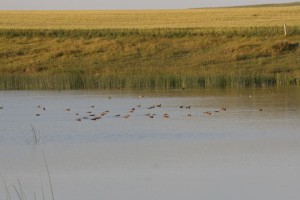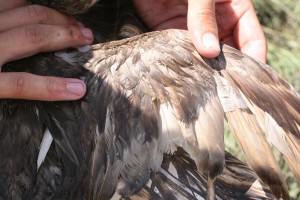I worked for two successive summers at the HaPET office in the Bismarck, ND USFWS building. We were concerned with areas in North Dakota and South Dakota that were west of the Missouri river, or west river.
This project started as an offshoot of the Partners for Fish and Wildlife (PFW) program. This program provided help for landowners who had a lack of water on their property. The USFWS helped them build dams in water basins for irrigation and livestock.
Each year, before we started the survey work, we would directly call each land owner to make sure they would still allow us on their property. According to the agreement the landowner signed, we were allowed unobstructed access to the wetlands that were created, but we didn’t want to ruffle any feathers. Most folks were quite happy to have our help and would invite me in for coffee so we could talk about their land.
Then it became time to pound the pavement and get to all the wetlands. The surveys usually didn’t take too much time, but some were very hard to access. We were given an ATV, binoculars, and a spotting scope. The best way to survey the waterfowl were when they were on the water and not moving a lot. So sneaking up on them, or scoping them from a distance were the best methods.

These were similar to the four-square-mile surveys. I really enjoyed these surveys. I had to travel to the southern most parts of South Dakota, part of Montana, to the northern most parts of North Dakota. Every day was different, and I really enjoyed that. Some times we would be laid up at a hotel during inclement weather, but typically we could work through most weather conditions.

We went out once in the spring to each wetland, and then again towards the fall to do a brood survey. The brood survey is super hard because all the adults have lost their breeding plumage, and the young hatch year birds, looked very similar to each other. It was much easier to ID them if the adults were around.



